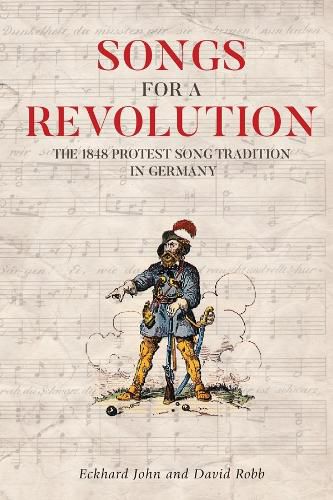Readings Newsletter
Become a Readings Member to make your shopping experience even easier.
Sign in or sign up for free!
You’re not far away from qualifying for FREE standard shipping within Australia
You’ve qualified for FREE standard shipping within Australia
The cart is loading…






The socially volatile period of the Vormarz (1830-1848) and the 1848 Revolution in Germany produced a wealth of political protest song. Songs for a Revolution makes available twenty-two prominent protest songs from that time, both lyrics (in German and English) and melodies. It also chronicles the songs’ reception: suppressed after the revolution, they fell into obscurity, despite intermittent revivals by the workers’ movement and later in the Weimar Republic, until they were appropriated as democratic cultural heritage by the folk and political song movements of East and West Germany after 1945.
The songs reflect the new, oppositional political consciousness that emerged during the post-1830 period of restoration and led to the revolution. The book makes use of broadsides, songbooks, newspaper reports, and manuscripts to document the songs’ transmission and shed light on the milieus in which they circulated. It also demonstrates how the appropriation of these songs by the German Liedermacher and folk scene shaped today’s cultural memory of the 1848 period. It illuminates the functioning of political ideology in these reception processes, which in turn have given rise to myths that have influenced the discourse on the 1848 songs.
$9.00 standard shipping within Australia
FREE standard shipping within Australia for orders over $100.00
Express & International shipping calculated at checkout
The socially volatile period of the Vormarz (1830-1848) and the 1848 Revolution in Germany produced a wealth of political protest song. Songs for a Revolution makes available twenty-two prominent protest songs from that time, both lyrics (in German and English) and melodies. It also chronicles the songs’ reception: suppressed after the revolution, they fell into obscurity, despite intermittent revivals by the workers’ movement and later in the Weimar Republic, until they were appropriated as democratic cultural heritage by the folk and political song movements of East and West Germany after 1945.
The songs reflect the new, oppositional political consciousness that emerged during the post-1830 period of restoration and led to the revolution. The book makes use of broadsides, songbooks, newspaper reports, and manuscripts to document the songs’ transmission and shed light on the milieus in which they circulated. It also demonstrates how the appropriation of these songs by the German Liedermacher and folk scene shaped today’s cultural memory of the 1848 period. It illuminates the functioning of political ideology in these reception processes, which in turn have given rise to myths that have influenced the discourse on the 1848 songs.